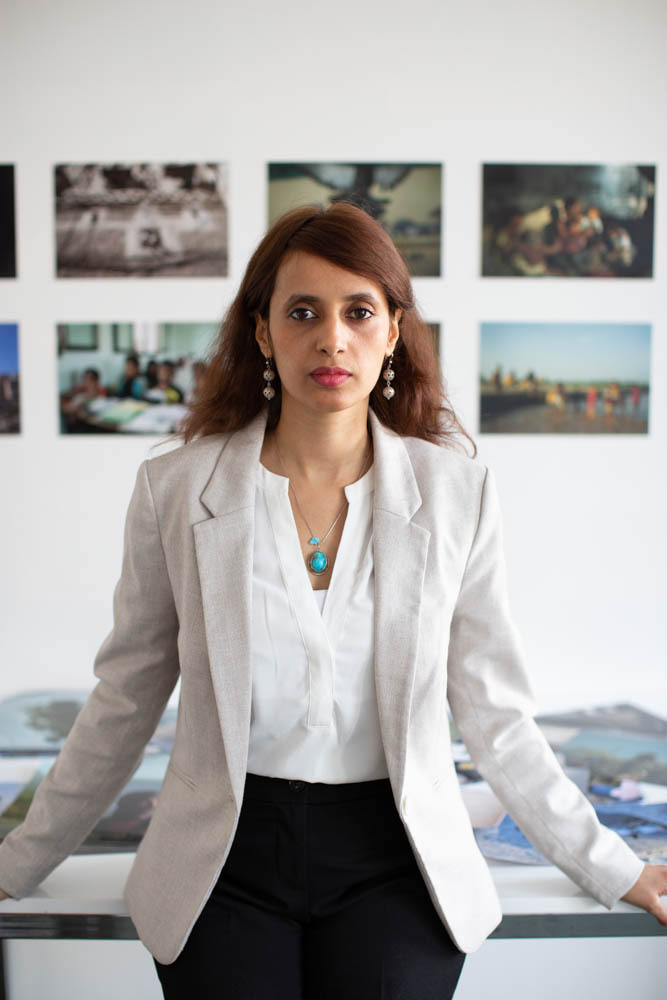Amira Al-Sharif is an award-winning Paris-based Yemeni photographer and artist with two decades of visual storytelling experience. Over the years, she has received numerous awards and fellowships, including from the World Press Photo Foundation, the Magnum Foundation, the Prince Claus Fund, the Arab Fund for Arts and Culture, the Samir Kassir Foundation, Women Photograph, and Free Press Unlimited’s “Most Resilient Journalist Award.” Her work has been published by National Geographic, the Washington Post, the Guardian, the Los Angeles Review of Books, the New York Times, ARTE TV, TV5 Monde, NPR, ICORN, UNICEF, UNHCR, among other outlets and organizations, and she penned a chapter for the best-selling anthology Our Women On the Ground: Essays by Arab Women Reporting from the Arab World (2019).
She has also participated in scores of photography exhibitions and festivals in Europe, the MENA region, and across the world, from India to South Korea, and Cambodia to the United States.In 2010, she studied photojournalism and documentary photography at the International Center of Photography in New York, and later returned to her home city of Sana’a, Yemen, to teach visual storytelling to hundreds of aspiring photographers. Since fleeing Yemen in 2018, due to the wartime constraints on her work and life, Amira has completed a two-year-long artist residency at Cité Internationale des Arts and is currently pursuing a Master of Fine Art at the Beaux-Arts de Paris. With her five-year French Talent Passport for artistic and cultural professionals, she has also launched a Paris-based company for her art practice.
Artist Statement
People often comment that they do not see war in my beautiful pictures of Yemen, where the world’s worst humanitarian crisis continues to cast a tremendous, even inescapable shadow across the landscape. But, since the war began nearly eight years ago, the vast majority of the scenes that I have captured in my beloved motherland have put my life at risk. Even if the outcome looks beautiful — schoolchildren or fishermen smiling in the north, newlyweds or goatherders smiling in the south, women young and old with fighting spirits from north to south — destruction, destitution, and danger often lurk just beyond the frame. War makes my beautiful pictures war pictures.
There are an untold number of bloody scenes from Yemen that only exist in my mind. Mental images that I cannot publish in a newspaper or hang on a gallery wall. They are the scenes that I did not want to photograph, to remember more than I already do. For me, just like my sister Hayat, who is also a photographer, flashing back to the stories and scenes that epitomize how ugly the war has been to us, and how much it has scattered us in all directions, is like free-falling into the darkness. We want to be in the light, to move on with our ambitions and dreams. That is why the word “move” has been dominant in my thoughts and speech over the last couple of years. In spite of the challenging conditions and hardships, we need to keep moving. We need to let go of that which imprisons our souls in all of the unfortunate things that have happened and are still happening to us. Sadly, we cannot stop this war.
I often ask myself if people who live in peaceful countries and regions could better identify with the beautiful pictures — seeing themselves in us, their lives in ours — rather than the bloody ones that commonly inundate the international media, from Syria at present to Vietnam in the past. As a photographer with over sixteen years of experience on the ground in Yemen, I have come to the realization that the logic of “blood is to war as beauty is to peace” is flawed, incomplete. And the reason my work tends to focus on the beauty of my suffering country is simple, relatable: like people everywhere, regardless of their context of war or peace, Yemenis appreciate love and life. We, too, wish to live our loves and our lives before that unavoidable moment called “death.” -- Amira Al-Sharif
About A Love Song to Socotra Island
Documentary photography series (2014)
Socotra is an isolated Yemeni island, and UNESCO World Heritage site, that lies between the Indian Ocean and the Arabian Sea. Described as “one of the most distinctive places on Earth,” or the “jewel of Arabia,” this special, almost secret, place is where I made A Love Song to Socotra Island, my first long-term documentary photography series. One Socotran woman in particular, Saadiya, lit up my imagination, and so for months at a time, I shadowed her days, just like the birds of the island.
When I met Aunt Saadiya, as I affectionately call her, the mother of seven was locked in a near decade-long struggle against local tribesmen who were after her inherited plot of land, which sustains and shelters her family and dozens of animals. “I have a fighting spirit,” she told me one day. “Whatever happens, I am not leaving my land. I fear nobody.”
From mountaintop to seaside, I documented Aunt Saadiya’s radiant life force, relatively free from the everyday constraints and fears of the conflict-ravaged mainland. After we rose with the sun, she greeted the birds and the trees, tended to her goat herd, taught her children to swim, and defended her family’s right to survive. In our last months together, a local court declared her “the rightful owner of the land.”
